
Welcome to riversidesnakes.com! I am David, a snake enthusiast living in Riverside, CA. Many people don't know that Riverside is in fact full of snakes! You just need to know where to find them - they can often be shy and elusive. Some California snake species are more common outside of the city limits, in different parts of Riverside County CA, but many types of snakes are indeed common in the more urban parts of Riverside. This guide is meant to help educate you about the beautiful snakes of Riverside, and to help you identify the most common snakes of Riverside, as well as the venomous snakes of Riverside that you should learn to recognize and avoid. If you want more detail, click here for my complete list of ALL snake species in Riverside. Remember the following:
- Most snakes of Riverside are harmless and don't want to encounter you
- Venomous snakes exist but are uncommon in Riverside, California
- Snakes eat rats and mice and are a valuable part of the California ecosystem
- Never kill a snake - if you leave a snake alone, it will leave you alone.
Common Snake Species in Riverside
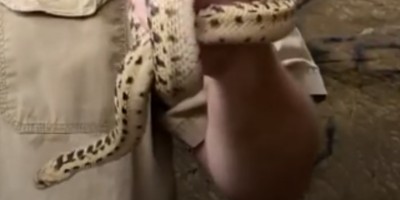 Gopher Snake:
A common, harmless snake found in yards and gardens during the day for the most part. Long and slender, these light brown and white snakes feed on rodents, hence the name. They tend to live around homes and help keep the rodent population down. Unfortunately, the general fear of snakes can result in gopher snakes being killed out of ignorance. Though they will coil and raise their heads if threatened and bite if aggravated, these snakes are not venomous and prefer to go about their lives. If the days grow too hot they will move about at dawn or dusk.
Gopher Snake:
A common, harmless snake found in yards and gardens during the day for the most part. Long and slender, these light brown and white snakes feed on rodents, hence the name. They tend to live around homes and help keep the rodent population down. Unfortunately, the general fear of snakes can result in gopher snakes being killed out of ignorance. Though they will coil and raise their heads if threatened and bite if aggravated, these snakes are not venomous and prefer to go about their lives. If the days grow too hot they will move about at dawn or dusk.
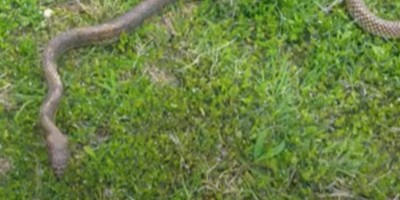 Coachwhip:
The coachwhip, or red racer, is a beautiful copper or red snake with a black head. They can also be spotted. Not picky eaters, they will eat pretty much anything they can swallow, even other snakes. Fond of deserts but applicable to most environments, they are excellent climbers and will eat birds, eggs, and hatchlings if they have the chance. They are not venomous and prefer to be active during the day as long as it’s not too hot. Like most snakes, if the heat of the day becomes too much for their systems, coachwhips will hunt and move about at dawn and dusk instead.
Coachwhip:
The coachwhip, or red racer, is a beautiful copper or red snake with a black head. They can also be spotted. Not picky eaters, they will eat pretty much anything they can swallow, even other snakes. Fond of deserts but applicable to most environments, they are excellent climbers and will eat birds, eggs, and hatchlings if they have the chance. They are not venomous and prefer to be active during the day as long as it’s not too hot. Like most snakes, if the heat of the day becomes too much for their systems, coachwhips will hunt and move about at dawn and dusk instead.
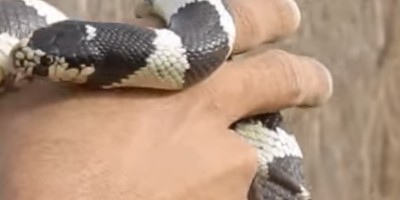 California Kingsnake:
Kingsnakes can be cream and black or cream and red. They are common throughout California and tend to be out and about during the day. Like most snakes, though, in hotter weather, they will hunt and move about at dawn and dusk instead. A constrictor, they are known to eat a wide variety of eggs and hatchlings, primarily reptiles and birds. Again, though, like most snakes, they will also eat rodents and other small mammals if they can. As a bit of trivia, they are immune to rattlesnake venom.
California Kingsnake:
Kingsnakes can be cream and black or cream and red. They are common throughout California and tend to be out and about during the day. Like most snakes, though, in hotter weather, they will hunt and move about at dawn and dusk instead. A constrictor, they are known to eat a wide variety of eggs and hatchlings, primarily reptiles and birds. Again, though, like most snakes, they will also eat rodents and other small mammals if they can. As a bit of trivia, they are immune to rattlesnake venom.
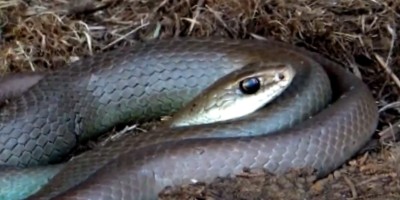 Western Racer:
These snakes are found throughout most of California, but only in the western portion of Riverside County. Green and brown in hue, these snakes are notoriously fast and often under three feet in length. Though good climbers if needed, they prefer to stay on solid ground. Non-venomous, they are known to be aggressive and will bite if angered. Active during the day, they tend to eat eggs, birds, small mammals, and even large insects. They are not a constrictor and thus ambush their prey, often eating it alive.
Western Racer:
These snakes are found throughout most of California, but only in the western portion of Riverside County. Green and brown in hue, these snakes are notoriously fast and often under three feet in length. Though good climbers if needed, they prefer to stay on solid ground. Non-venomous, they are known to be aggressive and will bite if angered. Active during the day, they tend to eat eggs, birds, small mammals, and even large insects. They are not a constrictor and thus ambush their prey, often eating it alive.
Venomous Snake Species in Riverside
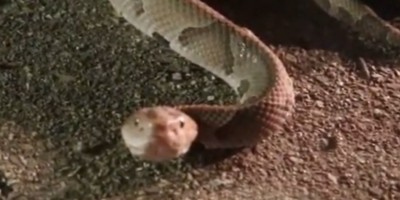 Copperheads:
A type of pit viper, meaning they can sense body heat, these venomous snakes are tan with dark bands along their bodies, as well as the more well-known coppery color. Copperhead bites are generally not lethal, but it’s always imperative to seek emergency medical help if bitten by a venomous snake. Generally, around three feet long, their venom actually contains a chemical that can inhibit cancer cells.
Copperheads:
A type of pit viper, meaning they can sense body heat, these venomous snakes are tan with dark bands along their bodies, as well as the more well-known coppery color. Copperhead bites are generally not lethal, but it’s always imperative to seek emergency medical help if bitten by a venomous snake. Generally, around three feet long, their venom actually contains a chemical that can inhibit cancer cells.
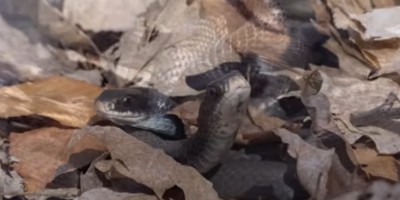 Rattlesnakes:
Though not common in Riverside, they can be found in the drier areas of the county. Their venom is incredibly potent and dangerous as it destroys cell tissues and causes paralysis in smaller prey. Their distinctive rattle betrays their position, but when using said rattle, they are usually not in a good mood. The ones found in the Riverside area are light tan with a dark V-pattern along their backs.
Rattlesnakes:
Though not common in Riverside, they can be found in the drier areas of the county. Their venom is incredibly potent and dangerous as it destroys cell tissues and causes paralysis in smaller prey. Their distinctive rattle betrays their position, but when using said rattle, they are usually not in a good mood. The ones found in the Riverside area are light tan with a dark V-pattern along their backs.
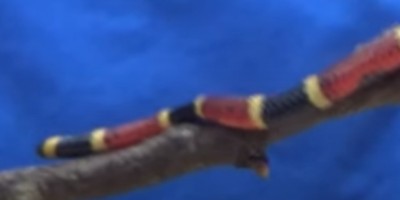 California Coral Snake:
The old adage goes “Red to yellow, kill a fellow; red to black, venom lack”, or some variation, as their coloration can be similar to some species of milksnake. While milksnakes practice mimicry to fool potential predators, coral snakes are very venomous. The venom of these snakes can take hours to take full effect, but when it goes it can prove incredibly dangerous. Generally, around three feet in length, these snakes are not normally aggressive but will strike if aggravated.
California Coral Snake:
The old adage goes “Red to yellow, kill a fellow; red to black, venom lack”, or some variation, as their coloration can be similar to some species of milksnake. While milksnakes practice mimicry to fool potential predators, coral snakes are very venomous. The venom of these snakes can take hours to take full effect, but when it goes it can prove incredibly dangerous. Generally, around three feet in length, these snakes are not normally aggressive but will strike if aggravated.
If you're unsure, you can email me a photo of the snake at info@riversidesnakes.com and I will email you back with the snake's species. If you found a snake skin, read my Found a Skin? page, and you can email me a photo of the skin, and I'll identify the snake for you. If you need professional Riverside snake removal help, click my Get Help page, or see the below website sponsor I found, who provides that service.
Remember, the term is not poisonous snakes of Riverside, it's venomous snakes of Riverside. Poison is generally something you eat, and venom is injected into you. That said, dangerous snakes are very rare in Riverside. The few venomous snakes of Riverside County are rarely seen. But they are commonly misidentified, so learn about all the snake species of Riverside in order to correctly identify them. These snakes are usually also found in the surrounding towns of Moreno Valley, Corona, Temecula, Murrieta, Hemet, Palm Springs, Perris, Indio, Menifee, Lake Elsinore, Palm Desert, Coachella, Eastvale, San Jacinto, Beaumont, Banning, Anza, La Quinta, Norco, Blythe, Cathedral City, Wildomar, Desert Hot Springs, Rancho Mirage, Indian Wells, Canyon Lake, Winchester, Calimesa, Idyllwild-Pine Cove, Nuevo, Cabazon, Aguanga, Woodcrest, Mountain Center, Mead Valley, French Valley, Thousand Palms, Desert Center, Bermuda Dunes, Cherry Valley, Thermal, Lake Mathews, Whitewater, Valle Vista, Highgrove, Mecca, Homeland, and the surrounding areas.
Read our article about:
Do snakes climb trees?
riversidesnakes.com domain and hosting costs made possible by the generous support of this sponsor:
